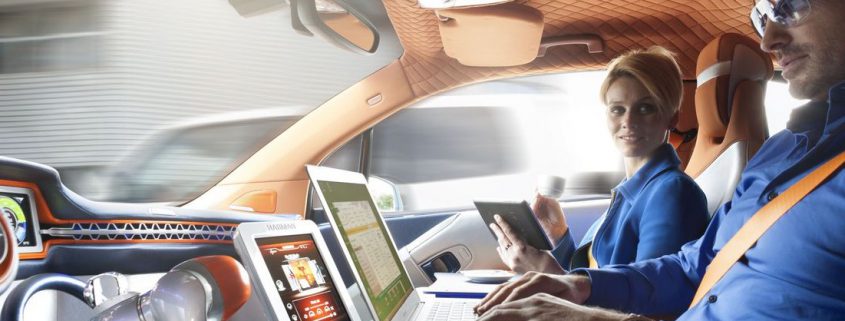U.S. Government Greenlights Self-Driving Vehicles, Issues Formal Regulations
Jennifer van der Kleut
The United States federal government essentially gave self-driving vehicles a green light on Tuesday, Sept. 20 by issuing formal regulations as to how they can be tested and eventually introduced to the mass market.
In a conference call hosted by the National Highway Transportation Safety Authority (NHTSA), followed by a formal statement, the government outlined a four-part policy that guides regulations at the federal level and makes recommendations for the states.
In essence, the policy says that any vehicle that can pass a 15-point safety inspection can move forward on the road to public adoption. The guidelines then outline how states can legally allow manufacturers to introduce the vehicle to the mass market.
The four main parts of the new policy are:
- 15-Point Safety Assessment: “The Vehicle Performance Guidance for Automated Vehicles for manufacturers, developers and other organizations includes a 15-point Safety Assessment for the safe design, development, testing and deployment of automated vehicles.” The assessment examines several areas of performance, such as cybersecurity concerns, how the car reacts to and recovers from system failures, ethics dilemmas, post-crash sharing of data with the NHTSA, and much more.
- Model State Policy: “Delineates the federal and state roles for the regulation of highly automated vehicle technologies as part of an effort to build a consistent national framework of laws to govern self-driving vehicles.”
- Current NHTSA Regulations/Options for Expediting Introduction: “Outlines options for the further use of current federal authorities to expedite the safe introduction of highly automated vehicles into the marketplace.”
- Modern Regulations/Identifying and Removing Obstacles: “Discusses new tools and authorities the federal government may need as the technology evolves and is deployed more widely.”
The statement points out that the new policies address both lower levels of automation, as well as vehicles capable of full automation.
The policy also addresses how recalls of automated vehicles should be handled, if they are ever necessary.
Of note is a section of the policy that appears to address a vehicle’s capability of taking evasive measures to avoid a collision if a driver is distracted or not paying attention and fails to take back control of the car.
The government’s statement appears to indicate a car’s failure to take evasive measures itself, without the assistance of the car’s main occupant (formally known as “the driver”) creates an “unreasonable risk.”
“In particular, [the policy] emphasizes that semi-autonomous driving systems that fail to adequately account for the possibility that a distracted or inattentive driver/occupant might fail to retake control of the vehicle in a safety-critical situation may be defined as an unreasonable risk to safety, and subject to recall,” the statement reads.
Both Transportation Secretary Anthony Foxx and NHTSA Administrator Mark Rosekind praised the new guidelines, and said they look forward to the adoption of autonomous vehicles, particularly for their potential to save lives by lowering instances of collisions.
“Automated vehicles have the potential to save thousands of lives, driving the single biggest leap in road safety that our country has ever taken,” said Foxx. “This policy is an unprecedented step by the federal government to harness the benefits of transformative technology by providing a framework for how to do it safely.”
“Ninety-four percent of crashes on U.S. roadways are caused by a human choice or error,” said Rosekind. “We are moving forward on the safe deployment of automated technologies because of the enormous promise they hold to address the overwhelming majority of crashes and save lives.”
Foxx added that he understands many are still wary of the technology, but pointed out that long ago, citizens were similarly wary of innovations we all take for granted today.
“New technologies developed in the 20th century, like seat belts and air bags, were once controversial but have now saved hundreds of thousands of American lives,” Foxx said. “This is the first in a series of proactive approaches, including the release of a rule on vehicle-to-vehicle communications, which will bring life-saving technologies to the roads safely and quickly while leaving innovators to dream up new safety solutions.”
The government’s statement says the formal policies issued Tuesday were the result of “significant public input and stakeholder discussions, including two open public meetings this year and an open public docket for comments.”
The Department of Transportation indicated it is also soliciting additional public comments for the next 60 days on the policy, which can be read in its entirety online.
“Through a series of next steps and in response to public comments, DOT intends to update the policy annually,” the statement indicated.
Image: Rendering of people in a self-driving car, by Rinspeed.

